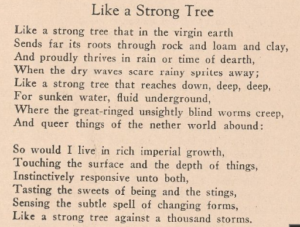When one thinks of nonfiction they think fact. It’s a genre that will always provide relevant sources and materials to help support a certain topic. Similarly, topics like racial prejudice, the New Negro, and the identity of African Americans are all things that were recognized during the Harlem Renaissance and are all supported by facts. On the other hand, when we think about fiction there might be a misconception. When one thinks about the word fiction a word that comes to mind is “fake”. Since fictional works aren’t supported by facts, people have the tendency to discredit them and don’t show the same appreciation to a piece of work that is filled with a person’s own opinions and raw emotions.
The thing with fiction, however, is that it does a great job of enchanting the reader and it gives that little extra something. Nonfiction is very concrete and it doesn’t leave you with any room to add your own input or be creative. With fiction, you can really make a piece of work your own and introduce a topic in a way that inspires and evokes new feelings and perspectives one might not have noticed by just looking at concrete information.
Survey Graphic includes a lot of visuals, stories, personal essays, and poems. These fictive works do an amazing job of highlighting some of the topics we find interesting and hold near and dear to us such as the Harlem Renaissance and the New Negro Movement. Now, because they aren’t so concrete they also make you wonder, what exactly is it that the writer is trying to communicate in these works? Countee Cullen is one of the poets whose work is included in Survey Graphic. When reading his poem “To a Brown Girl”, Cullen uses his artistry to touch upon the concept of identity and freedom. As Cullen suggests, “Youth is the time for careless weather; Later, lass, be weary” (“Survey Graphic”, 660). From these lines, you can interpret that Cullen is encouraging African American women to fall in love and live their life. Contrary to what the norms are/were (especially during his time), Cullen is all for freedom and self-expression. In his work, he’s debunking following the rules and what’s expected of you as an African American woman and encouraging the following of your own path. To be a good African American woman doesn’t mean you have to compromise love and enjoying life.

When looking for a visual to represent the message behind the poem, this gif really stood out to me. The main thing I took from the poem is that African American women are valuable and strong. To me, this gif highlighted that quite literally. Pictured you see a girl who’s absolutely glowing with a rainbow behind her. It invoked feelings of inner and outer beauty as well as strength. It felt right to include it and that little rainbow in the back really just inspired positivity, vibrancy, and transformation. Maybe when Cullen wrote his poem he wanted African American women to feel just that. To experience life while you’re young and have no regrets.
It’s works like this that not only resonate more with readers than nonfiction but also inform people in a way you would not be able to receive if you read a piece of nonfiction. To learn something by digging deep into a jumble of one’s thoughts can truthfully be hard to grasp and interpret. However, it’s that exact way of figuring something out that can sometimes be more impactful and thought-provoking.














